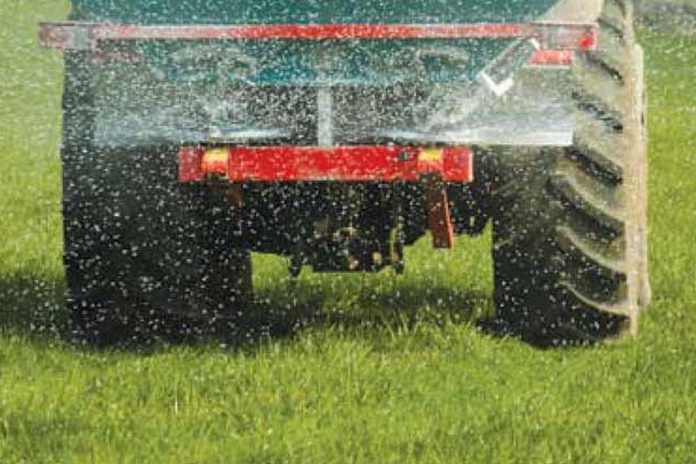In this article, Brian Hanthorn, CAFRE beef and sheep adviser, Dungannon, discusses setting the sower and sowing width and care of the sower after spreading.
Most common sowers categorise fertiliser into ordinary granular fertiliser or prills such as urea.
Many advanced sowers require the brand of fertiliser and the type as these all-influence flow rate and spreading width.
Once the desired fertiliser has been selected at the amount required per acre or per hectare, then spreading width is needed.
Spreading width on most beef and sheep farms is generally between 10 -18 metres. Some contractors can sow wider than this with very precise and accurate sowers.
Spreading width can be altered on oscillating spout sowers by increasing or decreasing the angle of spout travel. Some more advanced double-disc sowers can have adjustable vanes on the discs, which alters the angle to increase or decrease spreading width.
The handbook will outline the specifics of each machine; however, it is important to select a width that the operator feels comfortable and confident with.
The increasing use of GPS has facilitated an increase in spreading width, which speeds up the operation and improves accuracy. GPS clearly displays where to drive and the areas of the field which have already received fertiliser.
Setting the sower
To set the sower, first, find the calibration table or chart for your sower which will be in the handbook and occasionally on the sower itself.
Making sense of this table generally requires three pieces of information which are:
- Type of fertiliser;
- Forward speed;
- Spreading width.
When this information is fed into the chart, it will give a number setting for the sower. A phone app may also be available for very modern sowers to obtain this information.
After initial setup, the sowing is relatively straightforward, provided the spreading width is adhered to, and the tractor is going at the desired forward speed at 540 RPM on the PTO shaft.
If in doubt, sow a small field with the correct amount of fertiliser in the hopper and see how accurate it is.
Care of the sower after spreading
To ensure a long working life of the fertiliser sower, it is essential to wash it thoroughly at the end of each day.
Fertilisers are very corrosive substances, which will quickly corrode the machine if not properly looked after.
In the first part of this article, he discussed setting your fertiliser sower.





